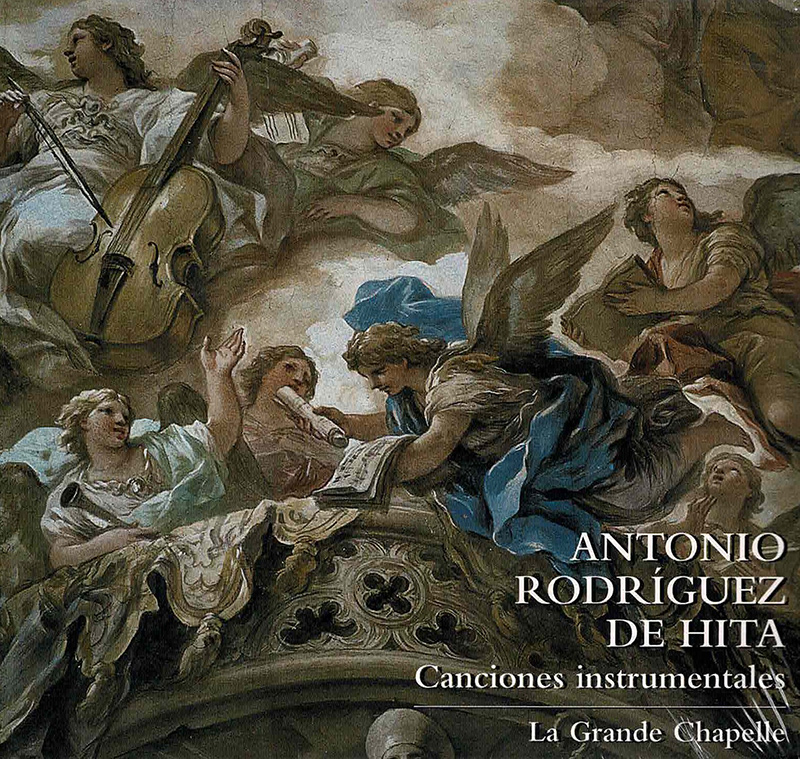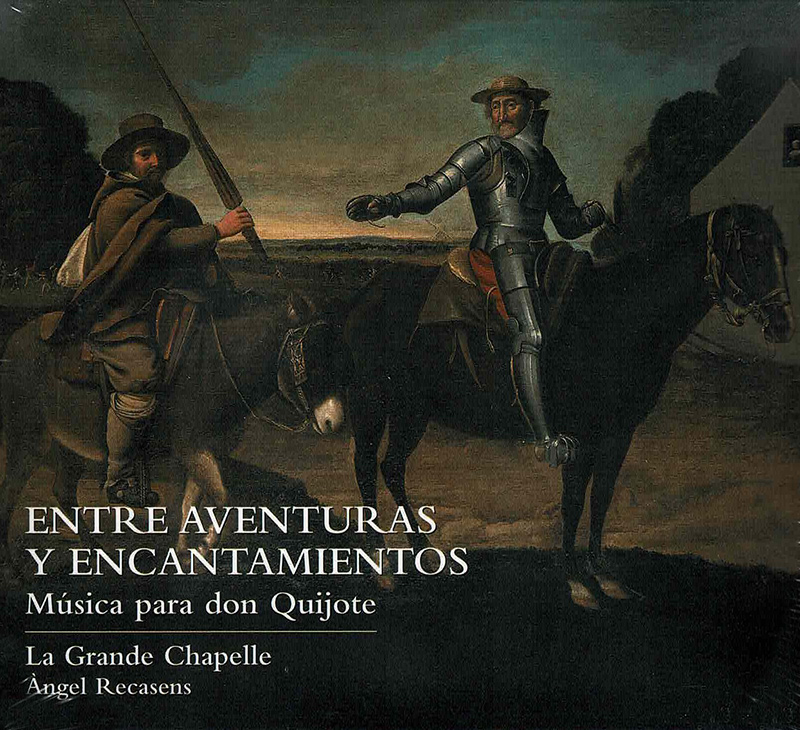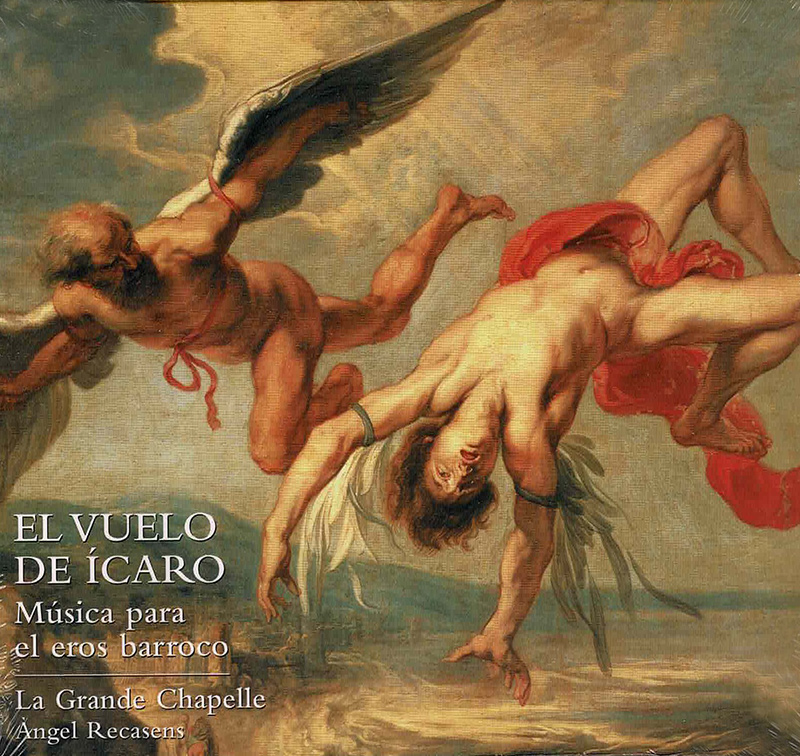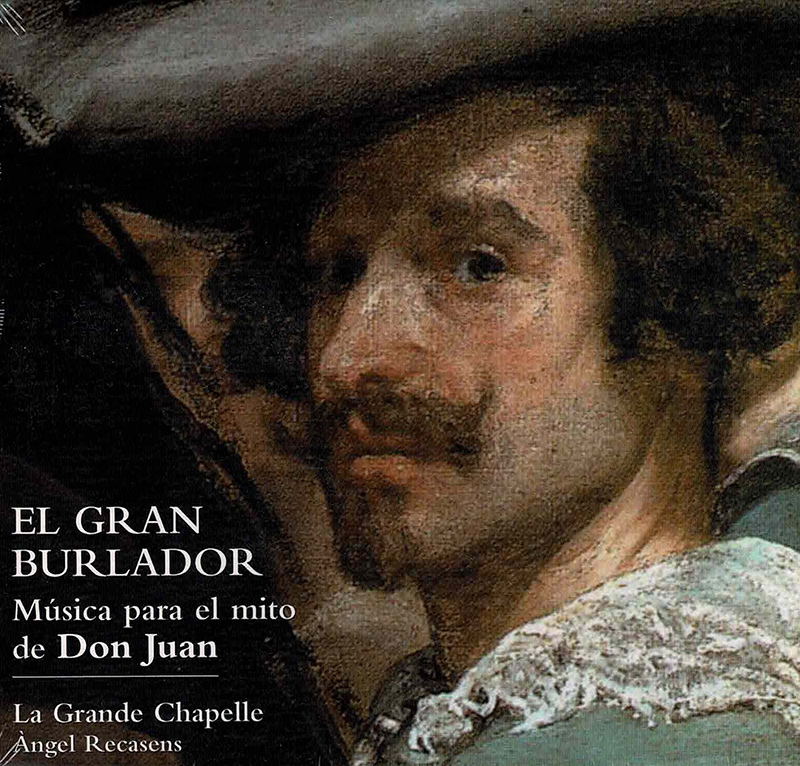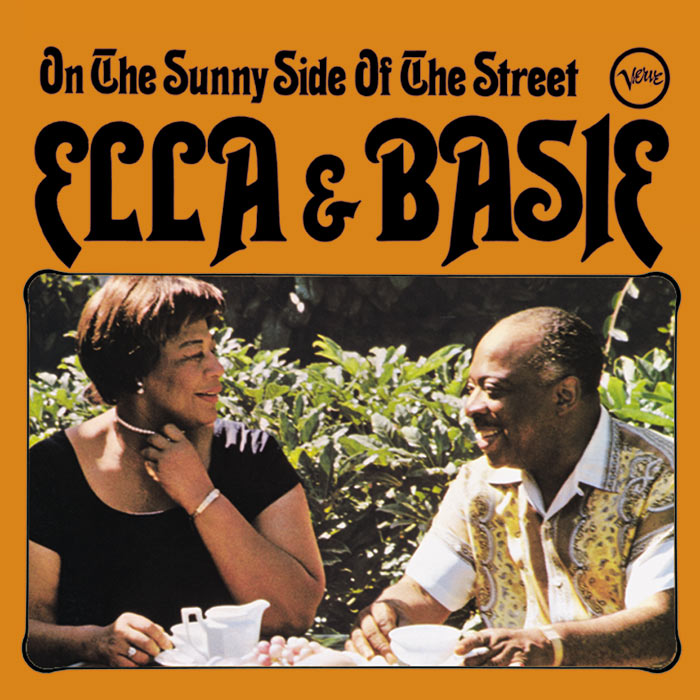Logowanie
Mikołaj - ten to ma gest!
Elton John, The Mamas & The Papas, Cat Stevens, Rod Stewart, Bobbie Gentry, Stevie Wonder, Engelbert Humperdinck
Memory Lane
Edycja Numerowana - 1000 egzemplarzy w skali światowej
RACHMANINOV, Eiji Oue, Minnesota Orchestra
Symphonic Dances / Vocalise
Best Recordings of 2001!!! NAJCZĘŚCIEJ KUPOWANA PŁYTA Z RR!
Karnawał czas zacząć!
Music of Love - Hi-Fi Latin Rhythms
Samba : Music of Celebration
AUDIOPHILE 24BIT RECORDING AND MASTERING
CHOPIN, LISZT, DEBUSSY, DVORAK, Gerhard Oppitz
Dances romantiques - A fantastic Notturno
Wzorcowa jakość audiofilska z Clearaudio
Winylowy niezbędnik
ClearAudio
Double Matrix Professional - Sonic
najbardziej inteligentna i skuteczna pralka do płyt winylowych wszelkiego typu - całkowicie automatyczna
de HITA, La Grande Chapelle, Angel Recasens, Schola Antiqua, Juan Carlos Asensio
Canciones instrumentales
- - Canción 7a en Sol menor a solo - Andante»
- - Canción 2a en Si mayor a 3 - Allegro»
- - Canción 1a en Fa mayor a 5 - Despacio»
- - Canción 1a en Si mayor a 3 - Allegro»
- - Canción 6a en Si menor a 3 - Pastoral»
- - Canción 2a en Re mayor a 5 - Andante»
- - Canción 6a en Mi mayor a 5 - A tiempo de minuet»
- - Canción 5a en V tono a 3»
- - Canción 5a en Fa mayor a 3 - Allegro»
- - Canción 6a en VI tono a 5»
- - Canción 6a en VI tono a 5 - Despacio»
- - Canción 4a en IV tono a 3»
- - Canción 1a en Do mayor a 3 - Allegro»
- - Canción 7a en Do menor a 3 - Despacio cantable»
- - Canción 1a en Sol mayor a 3 - Andante»
- - Canción 1a en Mi mayor a 3 - Despacio»
- - Canción 5a en Mi mayor a 5 - Andante»
- - Canción 1a en I tono a 3»
- - Canción 3a en Fa mayor a 3 - Moderado»
- - Canción 2a en Fa mayor a 5 - Andante»
- - Canción 6a en Do menor a 3 - Cantable»
- La Grande Chapelle - orchestra
- Angel Recasens - conductor
- Schola Antiqua - choir
- Juan Carlos Asensio - conductor
- de HITA
 Niewielkie, wręcz mikroskopijne iberyjskie wydawnictwo płytowe – Lauda – zaczęło wydawać swoje albumy w 2005 r. i ma w dorobku zaledwie 7 płyt, z których pięć mam przed sobą. Może to właśnie ze względu na rozmiary wydawnictwa ich płyty dotarły do nas dopiero teraz. Bardzo interesująco prezentuje się nagranie dzieł sakralnych a cappella (Lauda LAU 004), które skomponował José de Nebra (1702-1768). Kompozytor ten znany jest głównie dzięki zarzuelom, arie z których przypomniała niedawno Harmonia Mundi. Interpretacja zespołów La Grande Chapelle i Schola Antiqua jest bardzo dobra, oddaje w całej krasie piękno tych dzieł, które pozwalają zrozumieć, dlaczego Nebra za życia był ceniony głównie ze względu na swoją twórczość sakralną. Na płycie zarejestrowano odtworzone Nieszpory, w których części a cappella są porozdzielane sporą porcją muzyki organowej. To naprawdę piękna muzyka. Ciekawym jest pierwszy album wytwórni Lauda – Entre aventuras y encantamienteos – Música para don Quijote (LAU 001). Nagranie składa się z dwóch części: muzyki związanej z czasami Don Kichota napisanej przed rokiem 1600, oraz z dzieł, jakich słuchali Alonso Quijano i Cervantes, pochodzących z początków XVII w., w tym bardzo interesujące poematy autorstwa Cervantesa. Na płycie znajdują się również utwory instrumentalne. La Grand Chapelle, którą dyryguje Angel Recasens znakomicie odtworzyła atmosferę tej hiszpańskiej muzyki przełomu XVI i XVII w. Album El Gran Burlador – Música para el mito de Don Juan (LAU 006) przypomina inną postać mityczną, Don Juana. Powstała by upamiętnić 250 rocznicę urodzin Mozarta, oraz by oddać hołd Tirso de Molinie, którego arcydzieło El burlador de Sevilla y convidado de piedra dało światu legendę Don Juana i zainspirowało Lorenza Da Ponte i Mozarta, by stworzyć znakomitego Don Giovanniego. Grupa hiszpańskich znawców literatury i muzykologów połączyła najważniejsze fragmenty sztuki z muzyką tamtych czasów. Wybrano dzieła takich kompozytorów hiszpańskiego baroku, jak Cristóbal Galán, Juan Hidalgo, Bernardo Murillo, Manuel Correa, Manuel de Egüés, a także dzieła anonimowe.
Antonio Rodrígueza de Hita (1722-1787) to bohater kolejnego albumu wydawnictwa Lauda (LAU 005). Zawiera on jego dzieła instrumentalne zawarte w pochodzącym z 1751 r. zbiorze Escala diatónicochromático- enharmónica. Jest to jeden z niewielu istniejących XVIII-wiecznych zbiorów hiszpańskiej muzyki instrumentalnej o przeznaczeniu sakralnym. Wybrane do nagrania utwory są wyjątkowej urody. Siedmiu znakomitych artystów tworzących La Grande Chapelle po raz pierwszy nagrało te dzieła na instrumentach z epoki. Wraz ze znakomitym realizatorem dźwięku stworzyli piękny album, po który powinien sięgnąć każdy meloman. Ostatnim albumem, jaki otrzymałem to El vuelo de Icaro – Música para el eros barroco (LAU 003). Temat Ikara był wielokrotnie poruszany przez hiszpańskich poetów epoki baroku. Często do tych dzieł pisali muzykę tacy kompozytorzy, jak Manuel Correa, Bernardo Murillo, Sebastián Durón, Mateo Romero i Manuel Machado. Utwory te znajdują się w dwóch zbiorach: pochodzącym z 1656 r. manuskrypcie Libro de Tonos Humanos znajdującym się w Bibliotece Narodowej w Madrycie oraz w pochodzącym z początków XVII w. Cancionero Poético-Musical Hispánico de Lisboa, jaki znajduje się w Biblioteca de Ajuda w Lizbonie.
Utwory zostały ułożone w części odzwierciedlającej podróż Ikara: Skrzydła z wosku, Ikar, Słońce, Lot, Upadek.
Wspólnym mianownikiem tych nagrań jest zespół La Grand Chapelle pod dyrekcją Angela Recasensa. Ich wykonanie jest najwyższej próby, zastosowanie instrumentów z epoki jest ogromnym atutem ich interpretacji. Pozwala to słuchaczowi, choć trochę poczuć się jak za dawnych czasów. Te realizacje przywodzą mi na myśl dokonania innej znanej firmy krzewiącej muzykę hiszpańską – Alia Vox. Odnoszę wrażenie, że realizacje Laudy są mniej komercyjne, natomiast bardziej autentyczne. Mam nadzieję, że kolejne ich produkcje będą równie interesujące i będą stały na równie wysokim poziomie.
(cr) Muzyka21 Maj 2009
Many have been eagerly awaiting the recording of the instrumental songs from Antonio Rodríguez de Hita´s Escala diatónico-chromático-enharmónica (1751). With good reason, since this work is one of the rare extant examples of eighteenth-century Spanish instrumental music intended for religious use.
Antonio Rodríguez de Hita (1722-1787) is one of the most important figures of Spanish music of the second half of the eighteenth century. As a youth, he was the maestro de capilla and organist at the Alcalá de Henares collegiate church, and in 1744, he was appointed maestro at the cathedral of Palencia, where he remained for more than twenty years. From 1765 until his death in 1787, Rodriguez de Hita occupied the same position at the Real Monasterio de la Encarnación in Madrid, then one of Spain´s most prestigious royal institutions. Together with the playwright Ramón de la Cruz, he led the revival of the zarzuela during the second half of the eighteenth century, with works such as Las segadoras de Vallecas (1768) and Las labradoras de Murcia (1769), which served as models of the comic costumbrista genre, clearly indebted to the opera buffa, in the following decades. Nevertheless, the large majority of Rodríguez de Hita´s works - about 250 in all - were religious.
The collection of instrumental works known as the Libro para las chirimías dates to his years in Palencia, and constitutes a cycle of short pieces organized according to key and mode, to be performed by five instrumental soloists - two oboes, alto and two horns - as well as the bass. Rodríguez de Hita wrote this repertory as music for religious celebrations and to fit the needs of the cathedral of Palencia. As indicated by the title and specified in the appendix, these songs were written for the processions, masses and instrumental interludes of the religious festivities of the cathedral of Palencia, and chiefly for its Corpus Christi celebrations.
The program chosen for this recording is of an exceptional beauty and variety: just listen, for example, to the Canción 7ª - Despacio cantable or to the superb fugue in Canción 4ª en IV tono. The clarity and texture of the lines, owing to the fact that the music was written for a group of soloists, shines through this recording, as does the impeccable sound engineering - a common feature at Lauda - of Markus Heiland. The seven musicians, all of whom are soloists with the best period instruments orchestras, display their technical prowess and exquisite taste with carefully chosen tempos and dynamic. This first world recording with original instruments is also beautifully presented and comes with liner notes written by the greatest expert in the field. This recording has made it possible for a fascinating collection of instrumental works to finally claim its place, long overdue, and also pays tribute to one of the most daring and innovative musical talents of eighteenth-century Spain.
Rodríguez de Hita, Canciones instrumentales (Instrumental Canciones)
Christopher Price
Goldberg Magazine, no. 44, February 2007, p.102.
4 Stars Goldberg
"[…] the composer's bright and colourful ideas, lively rhythms and delightful melodies […]
Their performances, meticulous, elegant and sweetly adorned […] prove to be very witty […]"
Sense vergonya (Without Shame)
Xavier Cester
Avui. Cultura i Espectacles, 04/02/2007
"Another who shows no remorse in defending our heritage, in this case Spanish, is Àngel Recasens and his exemplary La Grande Chapelle".
Canciones instrumentals (Instrumental Songs)
Stefano Russomano
ABC. ABCD de las Artes, 13/01/2007
"[...] The members of La Grande Chapelle demonstrate here an exquisite sound and a good command of technique".
"Laudas" à música antiga espanhola ("Laudas" to early Spanish music)
Cristina Fernandes
Público. Mil Folhas. Música clásica, 29/12/2006, p. 22-23.
"One of Lauda Musica's most important recordings.
[…] music of a very high quality that can give great pleasure to the listener, offered here in an excellent performance".
Niewielkie, wręcz mikroskopijne iberyjskie wydawnictwo płytowe – Lauda – zaczęło wydawać swoje albumy w 2005 r. i ma w dorobku zaledwie 7 płyt, z których pięć mam przed sobą. Może to właśnie ze względu na rozmiary wydawnictwa ich płyty dotarły do nas dopiero teraz. Bardzo interesująco prezentuje się nagranie dzieł sakralnych a cappella (Lauda LAU 004), które skomponował José de Nebra (1702-1768). Kompozytor ten znany jest głównie dzięki zarzuelom, arie z których przypomniała niedawno Harmonia Mundi. Interpretacja zespołów La Grande Chapelle i Schola Antiqua jest bardzo dobra, oddaje w całej krasie piękno tych dzieł, które pozwalają zrozumieć, dlaczego Nebra za życia był ceniony głównie ze względu na swoją twórczość sakralną. Na płycie zarejestrowano odtworzone Nieszpory, w których części a cappella są porozdzielane sporą porcją muzyki organowej. To naprawdę piękna muzyka. Ciekawym jest pierwszy album wytwórni Lauda – Entre aventuras y encantamienteos – Música para don Quijote (LAU 001). Nagranie składa się z dwóch części: muzyki związanej z czasami Don Kichota napisanej przed rokiem 1600, oraz z dzieł, jakich słuchali Alonso Quijano i Cervantes, pochodzących z początków XVII w., w tym bardzo interesujące poematy autorstwa Cervantesa. Na płycie znajdują się również utwory instrumentalne. La Grand Chapelle, którą dyryguje Angel Recasens znakomicie odtworzyła atmosferę tej hiszpańskiej muzyki przełomu XVI i XVII w. Album El Gran Burlador – Música para el mito de Don Juan (LAU 006) przypomina inną postać mityczną, Don Juana. Powstała by upamiętnić 250 rocznicę urodzin Mozarta, oraz by oddać hołd Tirso de Molinie, którego arcydzieło El burlador de Sevilla y convidado de piedra dało światu legendę Don Juana i zainspirowało Lorenza Da Ponte i Mozarta, by stworzyć znakomitego Don Giovanniego. Grupa hiszpańskich znawców literatury i muzykologów połączyła najważniejsze fragmenty sztuki z muzyką tamtych czasów. Wybrano dzieła takich kompozytorów hiszpańskiego baroku, jak Cristóbal Galán, Juan Hidalgo, Bernardo Murillo, Manuel Correa, Manuel de Egüés, a także dzieła anonimowe.
Antonio Rodrígueza de Hita (1722-1787) to bohater kolejnego albumu wydawnictwa Lauda (LAU 005). Zawiera on jego dzieła instrumentalne zawarte w pochodzącym z 1751 r. zbiorze Escala diatónicochromático- enharmónica. Jest to jeden z niewielu istniejących XVIII-wiecznych zbiorów hiszpańskiej muzyki instrumentalnej o przeznaczeniu sakralnym. Wybrane do nagrania utwory są wyjątkowej urody. Siedmiu znakomitych artystów tworzących La Grande Chapelle po raz pierwszy nagrało te dzieła na instrumentach z epoki. Wraz ze znakomitym realizatorem dźwięku stworzyli piękny album, po który powinien sięgnąć każdy meloman. Ostatnim albumem, jaki otrzymałem to El vuelo de Icaro – Música para el eros barroco (LAU 003). Temat Ikara był wielokrotnie poruszany przez hiszpańskich poetów epoki baroku. Często do tych dzieł pisali muzykę tacy kompozytorzy, jak Manuel Correa, Bernardo Murillo, Sebastián Durón, Mateo Romero i Manuel Machado. Utwory te znajdują się w dwóch zbiorach: pochodzącym z 1656 r. manuskrypcie Libro de Tonos Humanos znajdującym się w Bibliotece Narodowej w Madrycie oraz w pochodzącym z początków XVII w. Cancionero Poético-Musical Hispánico de Lisboa, jaki znajduje się w Biblioteca de Ajuda w Lizbonie.
Utwory zostały ułożone w części odzwierciedlającej podróż Ikara: Skrzydła z wosku, Ikar, Słońce, Lot, Upadek.
Wspólnym mianownikiem tych nagrań jest zespół La Grand Chapelle pod dyrekcją Angela Recasensa. Ich wykonanie jest najwyższej próby, zastosowanie instrumentów z epoki jest ogromnym atutem ich interpretacji. Pozwala to słuchaczowi, choć trochę poczuć się jak za dawnych czasów. Te realizacje przywodzą mi na myśl dokonania innej znanej firmy krzewiącej muzykę hiszpańską – Alia Vox. Odnoszę wrażenie, że realizacje Laudy są mniej komercyjne, natomiast bardziej autentyczne. Mam nadzieję, że kolejne ich produkcje będą równie interesujące i będą stały na równie wysokim poziomie.
(cr) Muzyka21 Maj 2009
Many have been eagerly awaiting the recording of the instrumental songs from Antonio Rodríguez de Hita´s Escala diatónico-chromático-enharmónica (1751). With good reason, since this work is one of the rare extant examples of eighteenth-century Spanish instrumental music intended for religious use.
Antonio Rodríguez de Hita (1722-1787) is one of the most important figures of Spanish music of the second half of the eighteenth century. As a youth, he was the maestro de capilla and organist at the Alcalá de Henares collegiate church, and in 1744, he was appointed maestro at the cathedral of Palencia, where he remained for more than twenty years. From 1765 until his death in 1787, Rodriguez de Hita occupied the same position at the Real Monasterio de la Encarnación in Madrid, then one of Spain´s most prestigious royal institutions. Together with the playwright Ramón de la Cruz, he led the revival of the zarzuela during the second half of the eighteenth century, with works such as Las segadoras de Vallecas (1768) and Las labradoras de Murcia (1769), which served as models of the comic costumbrista genre, clearly indebted to the opera buffa, in the following decades. Nevertheless, the large majority of Rodríguez de Hita´s works - about 250 in all - were religious.
The collection of instrumental works known as the Libro para las chirimías dates to his years in Palencia, and constitutes a cycle of short pieces organized according to key and mode, to be performed by five instrumental soloists - two oboes, alto and two horns - as well as the bass. Rodríguez de Hita wrote this repertory as music for religious celebrations and to fit the needs of the cathedral of Palencia. As indicated by the title and specified in the appendix, these songs were written for the processions, masses and instrumental interludes of the religious festivities of the cathedral of Palencia, and chiefly for its Corpus Christi celebrations.
The program chosen for this recording is of an exceptional beauty and variety: just listen, for example, to the Canción 7ª - Despacio cantable or to the superb fugue in Canción 4ª en IV tono. The clarity and texture of the lines, owing to the fact that the music was written for a group of soloists, shines through this recording, as does the impeccable sound engineering - a common feature at Lauda - of Markus Heiland. The seven musicians, all of whom are soloists with the best period instruments orchestras, display their technical prowess and exquisite taste with carefully chosen tempos and dynamic. This first world recording with original instruments is also beautifully presented and comes with liner notes written by the greatest expert in the field. This recording has made it possible for a fascinating collection of instrumental works to finally claim its place, long overdue, and also pays tribute to one of the most daring and innovative musical talents of eighteenth-century Spain.
Rodríguez de Hita, Canciones instrumentales (Instrumental Canciones)
Christopher Price
Goldberg Magazine, no. 44, February 2007, p.102.
4 Stars Goldberg
"[…] the composer's bright and colourful ideas, lively rhythms and delightful melodies […]
Their performances, meticulous, elegant and sweetly adorned […] prove to be very witty […]"
Sense vergonya (Without Shame)
Xavier Cester
Avui. Cultura i Espectacles, 04/02/2007
"Another who shows no remorse in defending our heritage, in this case Spanish, is Àngel Recasens and his exemplary La Grande Chapelle".
Canciones instrumentals (Instrumental Songs)
Stefano Russomano
ABC. ABCD de las Artes, 13/01/2007
"[...] The members of La Grande Chapelle demonstrate here an exquisite sound and a good command of technique".
"Laudas" à música antiga espanhola ("Laudas" to early Spanish music)
Cristina Fernandes
Público. Mil Folhas. Música clásica, 29/12/2006, p. 22-23.
"One of Lauda Musica's most important recordings.
[…] music of a very high quality that can give great pleasure to the listener, offered here in an excellent performance".





























